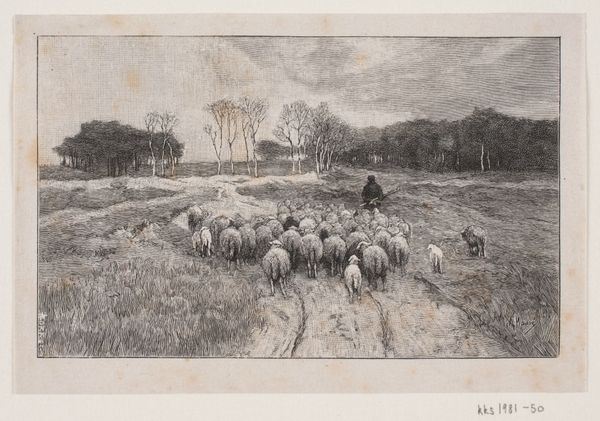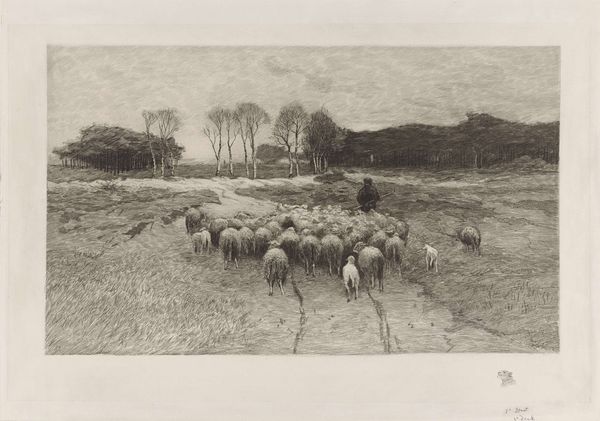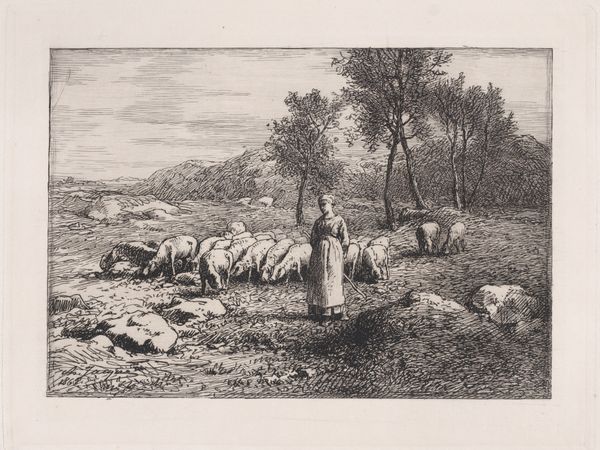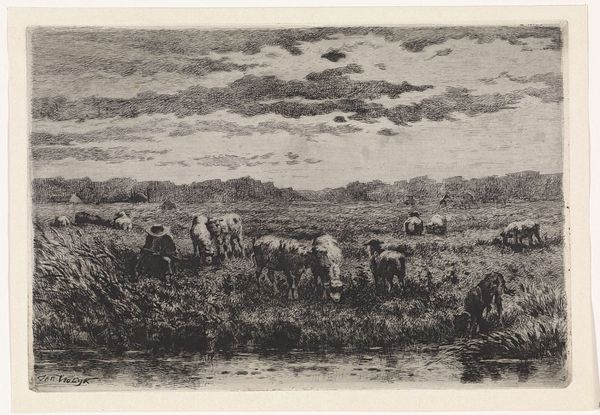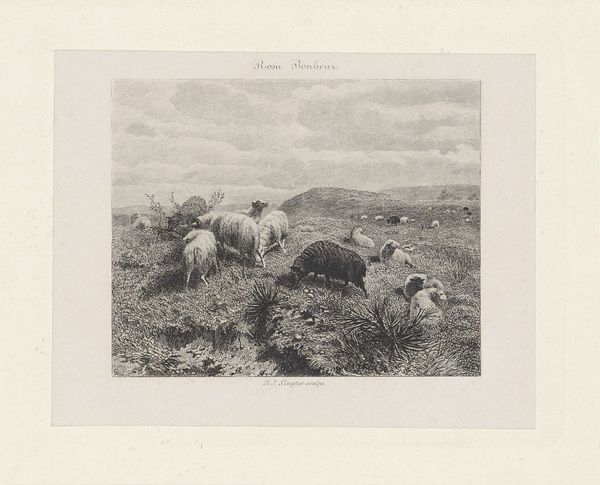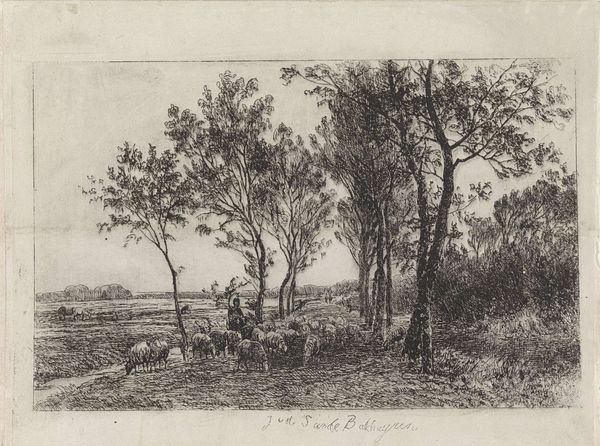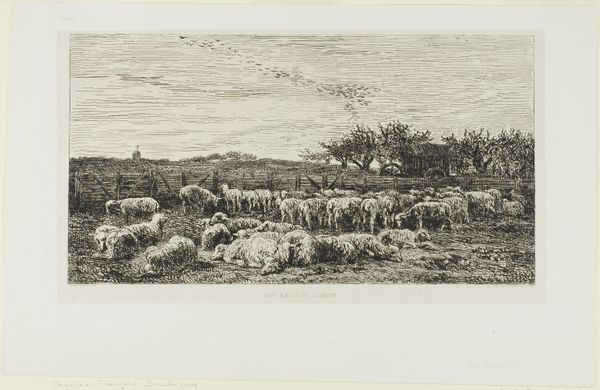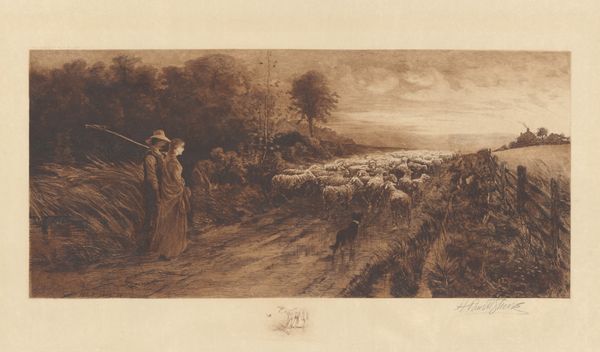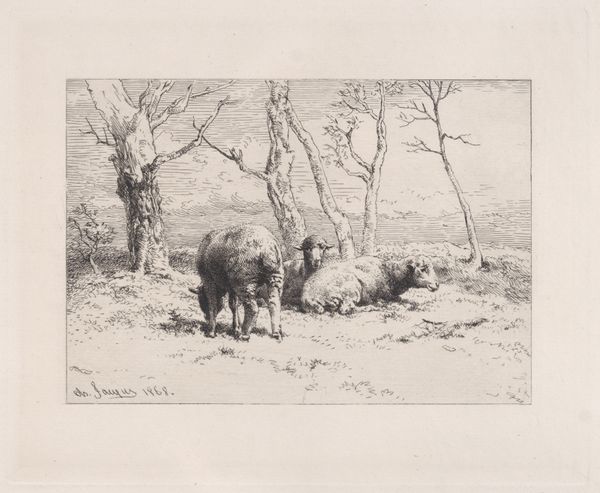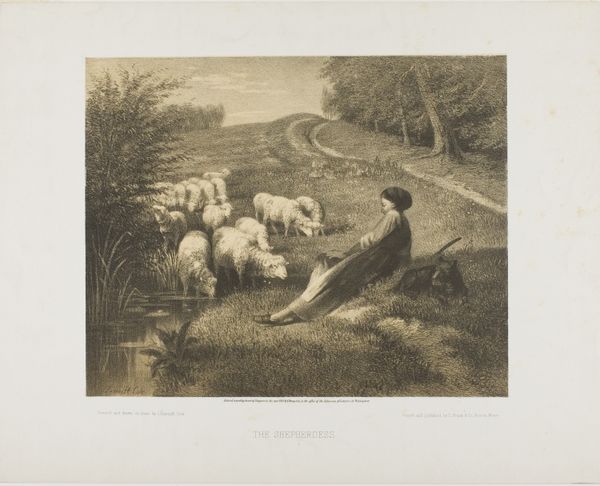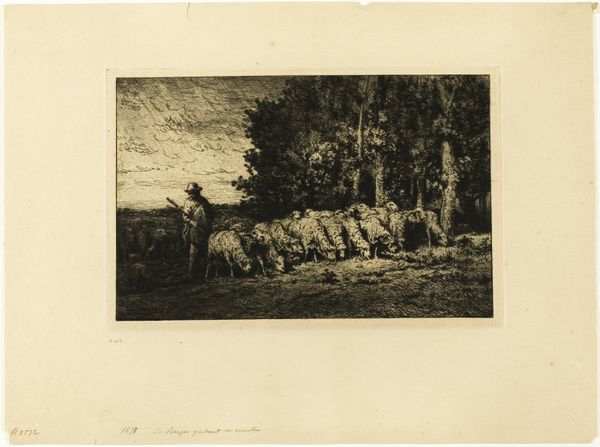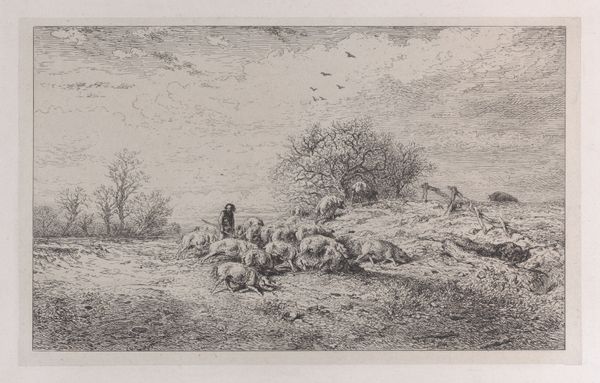
print, etching
# print
#
etching
#
old engraving style
#
landscape
#
realism
Dimensions: height 174 mm, width 229 mm
Copyright: Rijks Museum: Open Domain
Editor: So, this etching is "Schaapherder met kudde op de hei" by Willem Steelink, dating from between 1866 and 1913. The title translates to "Shepherd with Flock on the Heath," and I get a strong sense of loneliness and maybe even exploitation from the image. What's your interpretation of this work? Curator: It's interesting you pick up on loneliness and exploitation. I think framing this work through the lens of social and economic realities of the period helps unlock its deeper meanings. Etchings like these often romanticized rural life, but what were the power structures at play here? Consider land ownership, class disparities, and the vulnerability of both the shepherd and the sheep. What do you make of the shepherd's posture in relation to the flock and the landscape? Editor: He seems…disconnected. Like he’s part of the landscape himself, almost as vulnerable as the sheep. It's as if his identity is entirely bound to this harsh, pastoral existence. Curator: Precisely. This resonates with broader themes in Realist art - grappling with what it means to live a life tethered to the land, often with limited agency. And how are we, as viewers, complicit in consuming these romanticized images without acknowledging the inherent precarity? It's a question about ethical looking. Editor: I see your point. The seemingly simple image now seems loaded with social commentary. It challenges us to question the romantic ideals it initially presents and think about labor and social injustice. Curator: Absolutely. Art is never created in a vacuum. By examining these historical artworks through a critical lens, we can gain valuable insights into the complexities of society. Editor: I hadn't thought of it that way. I appreciate you connecting this image to larger questions of social power and ethical consumption of art.
Comments
No comments
Be the first to comment and join the conversation on the ultimate creative platform.
